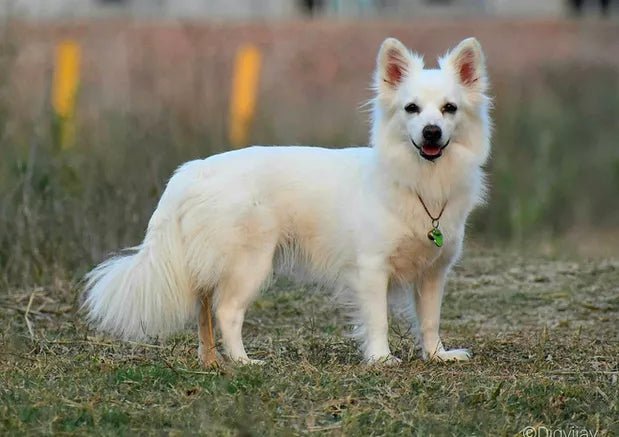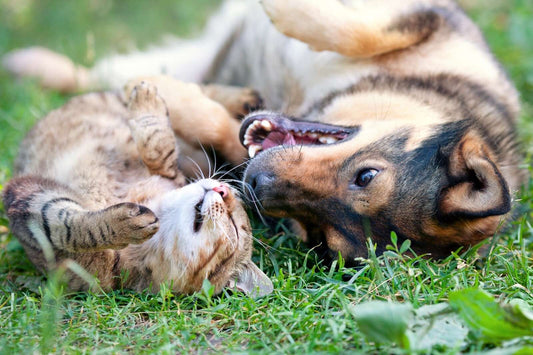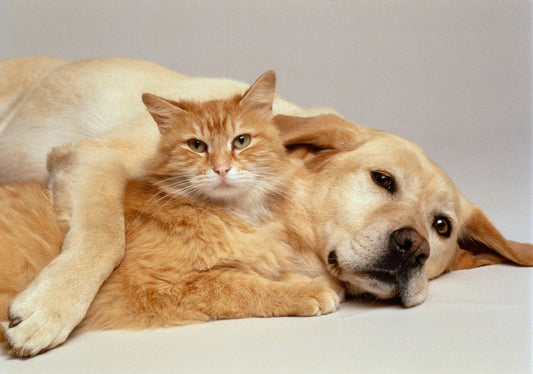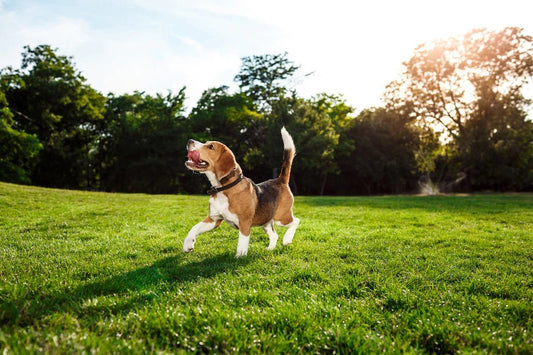Indian Spitz dogs are members of the large Spitz family comprising long-haired domestic dogs with pointy ears and muzzles. Commonly confused with Pomeranians (another Spitz breed) in India, this dog breed was among the most popular pet dog choices in the country three decades ago, and remains so.
There's a fun fact about our tiny ball of floof! Compared to the other dog breeds, the Spitz got a boost in its popularity because of its appearance in the popular Bollywood movie - Hum Aapke Hain Kaun. The lead actress ended up adopting the then 6-year-old dog.
Let’s discuss the characteristics and requirements of this breed to help you determine whether they’re the right pet for you. We’ll begin by quickly going through their basic physical characteristics:

Height: 13-15 inches in males; 11-13 inches in females
Weight: 15-20 kilograms in males; 10-15 kilograms in females
Lifespan: about 12-15 years on average
Colors: White, dusky brown, black
Coat type: double coat
History
During the 19th century, the then ruling British introduced the Spitz for the very first time in India. Thought to have been descended from the German Spitz, people wanted a breed that can acclimate to the Indian summer, but with characteristics of its German ancestors as well. Years of breeding finally gave birth to the Indian Spitz that we know now. They can bear the Indian heat, they have the intellect of their German parents, and they resemble a mix of a Samoyed and a Pomeranian, making the Spitz become a fast favourite among people.
The Appearance of Indian Spitz
The Indian Spitz is a small breed dog with predominantly white fur acquired from their ancestors (German Spitz) which they have managed to retain in a tropical country like India. Spitz has a long, thick, and soft fur coat which gives this breed an attractive appearance, making them a preferred pet for many. You can find them in different colours, usually solid, like milky white, dark black, and dusky brown. Few have spots on their fur or a mix of 2 colours. With regular brushing and maintenance, their fur would be soft and silky, with a full fluffy collar.

Their legs are slightly shorter compared to their bodies, making their heads seem bigger in size (which makes them look more adorable!). They have a wedge-shaped head, with high, pointy ears, making them seem expressive in nature. Indian Spitz puppies are at times born with droopy ears, but they become high and pointy once enter adulthood. Their tail is long, full, and fluffy and it curves over their back.
Another attractive feature of this breed is their pale, almost whitish irises, which can turn slightly greenish or bluish depending on how they feel; unlike most animals, their irises are significantly visible and lend their face an expressive touch. It is easy to identify what they are feeling or where they are looking due to their visible irises.
The Indian Spitz is also a breed that rarely suffers from common dog health problems. That, combined with their expressive faces and small size, makes them very popular among Indian families.

The Personality of Indian Spitz
Planning to bring one of these fluffballs home? Well, make sure you’re familiar with their personality traits first.
Temperament
This little breed is bursting with energy and playfulness. They get excited easily but are also very capable of understanding emotional cues, which makes communicating with them much easier. They have strong hunting instincts (they were bred to hunt), but they get along extremely well with children and other pets.
They’re loyal and affectionate towards their owners, and cheerful, with a touch of assertiveness that helps them keep the Small Dog Syndrome at bay, which is a common occurrence in most other small dog breeds. Due to their high intelligence, they take up the role of being the "protector of the house" with utmost seriousness. If not trained properly, you may have to deal with frequent excessive barking any time you have a guest at home.
Adaptability
When it comes to adaptability, the Indian Spitz might surprise you. They’re intelligent, quick to learn, and can get along well with both children, adults, and animals in general. They have a high trainability rate and are known to be quite obedient as they grow older. They can be easily housebroken and trained to conduct their business outside at a very early age, with minimal effort.
Suited for all climates in India, they’re also apartment-friendly dogs. There’s just one downside to owning them: this breed is not well-suited to being in isolation and shouldn’t be left alone for long periods of time, or they could demonstrate destructive behaviour and develop separation anxiety.
Caring for your Indian Spitz
So far, we’ve only talked about the appearance and personality of this breed. Now, let’s see what you need to do for their health and well-being.

Health
The Indian Spitz lifespan is around 15 years and they are generally a healthy breed. They do have certain genetic conditions inherited during breeding, but nothing of major concern. It is strongly advised to never miss their shots, especially their first puppy shots, as this can go a long way in preventing common diseases. This is the case for all pets - along with regular vet visits, and proper nutrition, your pets can live a long, healthy life.
Diet and exercise
Once an Indian Spitz puppy crosses one month in age, they require 3-4 meals a day up to the age of 6 months, after which they can easily survive on 2 meals a day. Their food should ideally be rich in protein, glucides, calcium, fatty acids, and vitamins. While raw meat must be a part of their diet, feeding it to them once or twice a week should be enough. For their staple diet, you can go with either dry dog food (kibbles) or a home-cooked meal.
Cooking for an Indian Spitz is not that complicated; all you need to do is divide their meal into three parts: meat (or fish), rice, and veggies.
In terms of exercise, they like to go on daily walks. They are utility dogs, which means they were bred to work or hunt. In the past, they have been used as sled dogs and tracking dogs. Keeping that in mind, they would not enjoy being cooped up in small spaces for long periods of time with nothing to do. They are highly adaptable to apartment life, as long as they get their daily walks and regular playtime with the interactive dog toys, dog treats and ample attention.
Training and socialization
If you own an Indian Spitz, training them will never be a hassle for you. First-time pet parents or novice trainers can easily handle a Spitz. Owing to their intelligence (one of the highest amongst the dog breeds of India), this breed is a fast learner and is quick to understand and follow commands. While training them, do ensure consistency and variation to avoid boredom.
Indian Spitz is also highly social and will mix with other people and animals themselves, if they get the opportunity. Even their daily walks are enough to meet their socialization needs.
Grooming and maintenance
Given their long, thick, white fur coat this breed requires regular brushing of at least 15 to 20 minutes per day. Doing so would also reduce their shedding to a large extent. However, they do grow a thick set of fur during winters, which has to be shed during the hot summers (leading you to have some furry furniture around your house!). So don't skimp on the brushing! But other than that, their grooming needs are minimal. Indian Spitz takes their cleanliness very seriously and will not get themselves dirty often; bathing them twice a month should be enough. Regular nail trimming is always advised to prevent painful ingrown nails. Ears and eyes also have to be cleaned on a regular basis, which can be done using hypoallergenic pet wipes, or using a damp cloth. Also, nowadays, there are many dog grooming products available online that you may use if you want.
They also enjoy being groomed, unlike most canines, which means their grooming sessions would turn into a bonding session between you and your pets.
Is the Pomeranian related to the Indian Spitz?
The Pomeranian is a cousin of the Indian Spitz, and they are often mistaken for each other. Since they are closely related, they do have many similar characteristics, but they have distinct features as well, with one of the major ones being that the Spitz is much bigger than a Pomeranian. Other than that, the Pom's ears are rounder, with a flatter face, and a much thicker coat.

If you’re looking for a tiny, energetic, and intelligent canine pet that looks undeniably cute and is also adaptable in India, Spitz is your best choice!













3 comments
I have a spitz who is 17 years old and I completely agree to everything mentioned here. The most important thing is speration anxiety! My Dog just could not deal with us leaving the house and stays empty stomach until we return
It is a beautiful and nice information
For the Indian spitz lover
Dog